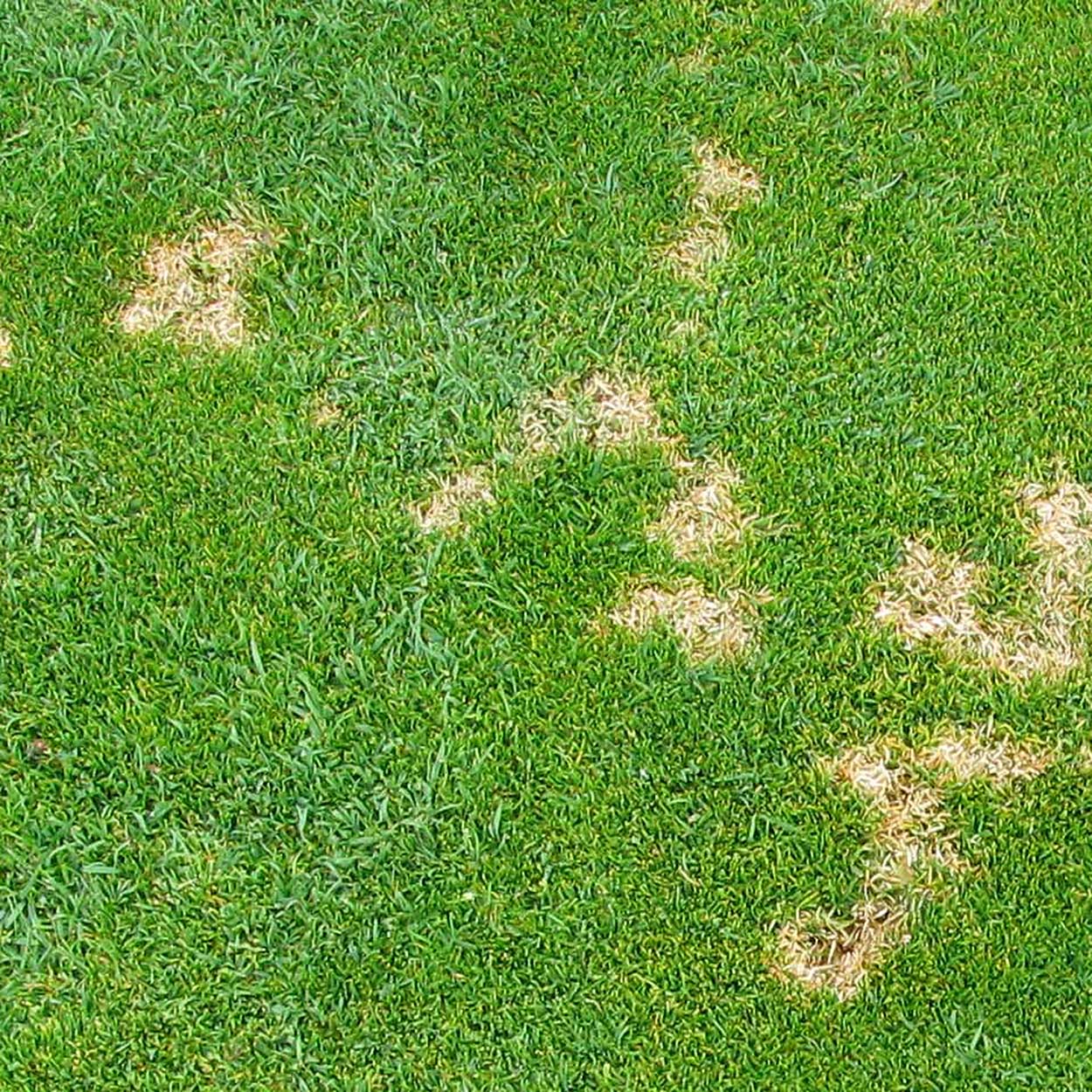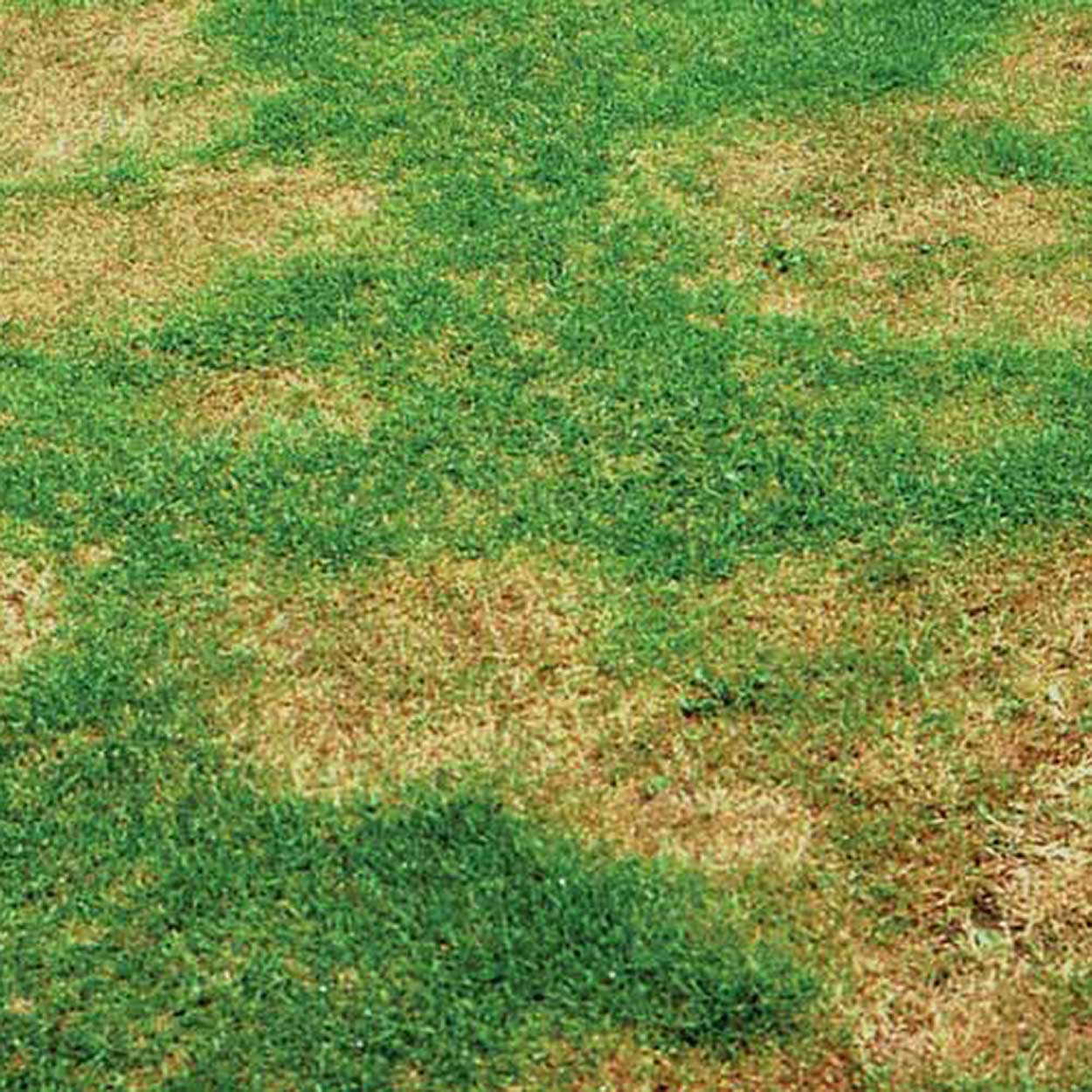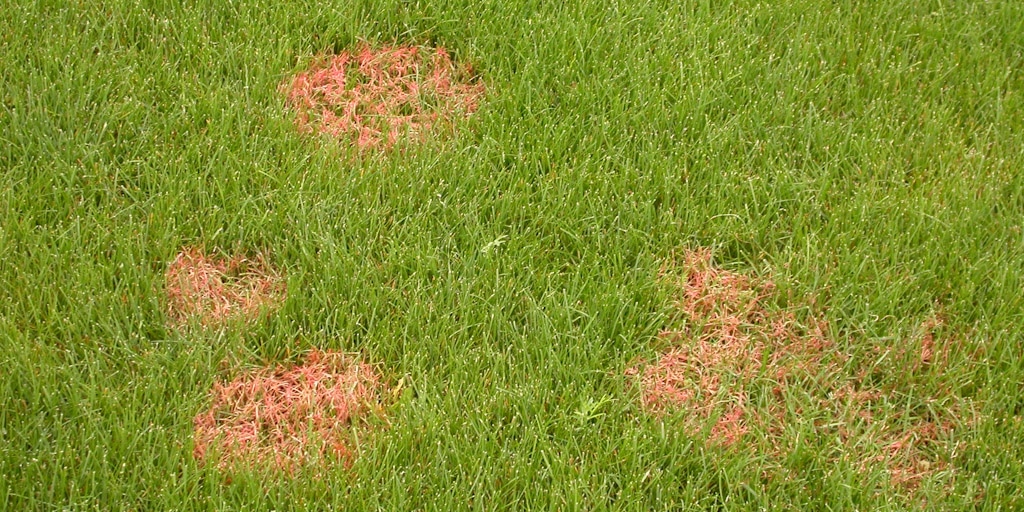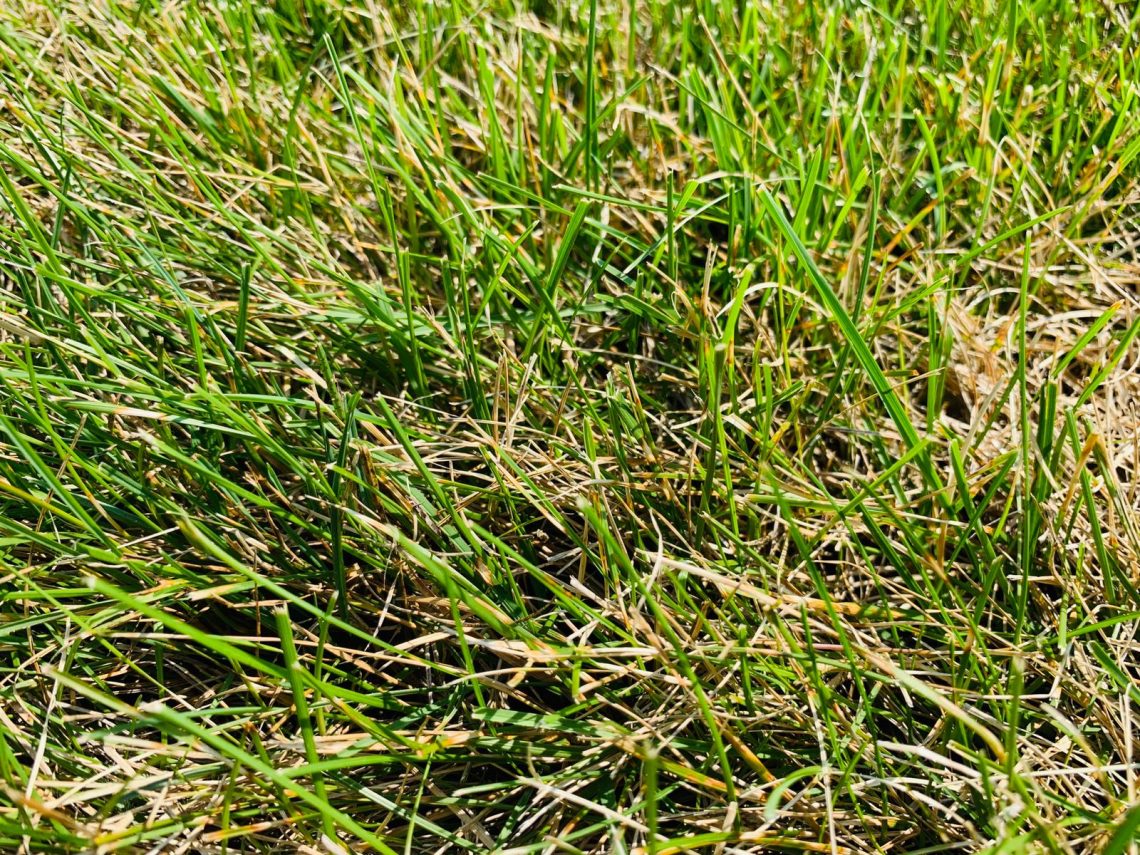Our Guide To Summer Diseases - Part 2
20th July 2021
As the summer develops, so do a number of diseases that we need to be aware of. Along with Anthracnose, Summer Microdocium Nivale, Waitea Patch and Superficial Fairy Ring, come four other diseases that are particularly virulent in the mid to late summer.
Dollar Spot 'Sclerotina homoeocarpa'

Spots about 25-50mm (The size of an American Dollar) in diameter of a distinct straw coloured, almost bleached looking grass that are slightly sunken. Leaf lesions have a bleached white centre and reddish brown borders, some mycelial growth may be visible in early morning. Dollar Spot is triggered by: prolonged periods of leaf wetness, moderately dry soil, humid conditions with temperatures of 21-26°C, low or deficient nitrogen (N), low fertility and excessive thatch.
Cultural Control:
Reduce periods of leaf wetness.
Water early mornings and not in the evenings.
Maintain good nutritional inputs.
Apply amino acids to help elevate stress.
Aerate to ensure that root zone is not compacted.
Manage thatch levels in a programmed approach.
Reduce mowing and box-off cuttings from affected areas if possible.
Chemical Control:
Instrata Elite
Dedicate
Ascernity (moderate control)
Take All Patch 'Gaeumannomyces graminis'

Take-All Patch primarily attacks Bent (Agrostis) grasses but can occasionally be seen on other grasses. Circular patches/rings are created where the Bent has been killed off allowing invasion of weeds grasses, normally Annual Meadow Grass (poa Annua). Patches can measure from a few centimeters in diameter to over a meter and become irregular in shape. Symptoms may fade in late autumn and winter.
Take all Patch is most common on fairly newly constructed USGA greens (normally 2-8 years old) but can also occur following repeated heavy sand dressings. Soils with low CEC, poor nitrogen fertility and with a high pH (>6.5) are suitable conditions for Take-All Patch to take hold.
Cultural Control:
Maintain good nutritional inputs.
Try to reduce pH of soil so that conditions are less favourable to pathogen.
Increase biological activity in the new sand environment so that there are more natural antagonists to the pathogen.
Manganese (Mn) has be shown to be effective as part of an integrated approach. Apply Prestige Take All Resistor or Sierraform Step Hi-Mag as a good source of manganese.
Check water quality for pH and nutrient levels.
Use acidifying feeds such as ammonium sulphate based fertilisers.
Avoid organic fertiliser, which tend to increase pH.
Avoid potassium nitrate, which increases soil surface pH.
Check topdressing pH.
Chemical Control:
Heritage WSG
Red Thread 'Laetisaria fuciformis'

Red Thread is a fungal disease that occurs mostly on turf where there is a low soil nitrogen level. Compacted soils or conditions where poor rooting is likely, can increase disease occurrence.
Red Thread develops on the plant surface and does not generally cause damage but astatically is undesirable. Symptoms start as small mostly circular patches of dead leaves interspersed with live plants.
The patches have a pink tinge. Closer inspection will reveal pale pink to red needle or horn-like outgrowths. In later stages the disease will produce pink flocks of mycelium resembling candyfloss.
Cultural Control:
The first approach should be to prevent this situation arising by applying adequate nitrogen fertiliser as part of a programmed approach.
Apply the correct fertiliser according to turf situation and height of cut.
Aerate soil to encourage good root growth.
Select resistance grass seed cultivars.
Chemical Control:
Dedicate
Instrata Elite (moderate control)
Leaf Spot 'Drechslera'

Leaf Spot is a fungal disease that attacks the leaf of mainly Ryegrass (Lolium spp) but can sometimes be found on Fescue (Festuca spp) and Bent (Agrostis spp). It occurs during warmer seasons, high humidity, drought conditions, when foliage remains wet and or there is high shade levels.
It readily moves across the turf surface on water film. It is very often found in a stadium environment due to lack of air movement but can be seen on all turf. Leaf Spot is just found on the leaf and does not usually damage plants significantly. However, if left untreated it can infect the crown, this then turns yellow and can die if temperatures increase. This is referred to as the melting-out phase of the disease.
Cultural Control:
Minimise surface wetness.
Increase airflow.
Balanced nutrition promote harder turf that is more resistant to disease attack.
Remove excess thatch in an integrated programme.
Use resistant cultivars.
Raise height of cut to avoid stress if less than 50mm.
Chemical Control:
Heritage WSG
Dedicate (Moderate Control)
Medallion TL (Moderate Control)
For qualified advice on which fungicide is most suitable for your site timing of application and for fungicide resistance management, speak to one of the Collier Turf Care BASIS qualified advisors.
The addition of Prestige Super Recovery to a fungicide adds balanced vital trace elements and reduces plant stress as well as containing a spreader to distribute the fungicide across the whole leaf, and also a rain fastener. Remember that you should not tank mix anything with a fungicide, unless it is approved and registered as an adjuvant (look for the registered adjuvant number).
With a BASIS qualified advisor, prepare an ITM (Intergraded Turf Management plan) for your turf. Use the Collier Turf Care Disease Blog to see when disease pressure is high.
By Chris Humphrey MBPR FQA, Technical Manager
For expert help and advice, contact Collier Turf Care on 01328 700600
Related Products
In Stock
£197.14
inc VAT
£164.29
ex VAT
In Stock
From
£425.14
inc VAT
From
£354.29
ex VAT
In Stock
£1,134.86
inc VAT
£945.71
ex VAT
In Stock
From
£216.00
inc VAT
From
£180.00
ex VAT
In Stock
From
£399.43
inc VAT
From
£332.86
ex VAT
In Stock
£94.00
inc VAT
£78.33
ex VAT
In Stock
£164.36
inc VAT
£136.97
ex VAT